- Introduction: Outline why self‑employed renters often lack traditional pay stubs and how this guide will help them navigate proof of income across the US, UK and Canada.
- Legal basics: Explain what constitutes a valid pay stub for freelancers, how laws differ by jurisdiction, and why misrepresentation is illegal.
- Allowed edits: Detail permissible edits when compiling a self‑employed pay stub—redaction, formatting, combining documents—and include a Compliance Snapshot.
- Illegal edits: Describe alterations that cross legal lines (inflating income, forging employers, altering dates) and the potential consequences of fraud.
- Use cases: Identify situations where self‑employed renters need professional document formatting, such as rental applications, car loans, SBA loans, and cross‑border scenarios.
- How we work: Step through FinancialDocsProvider.com’s process for helping freelancers assemble compliant proof‑of‑income packets.
- Checklist: Provide a comprehensive checklist of what belongs in a self‑employed pay stub and supporting packet in the US, UK and Canada.
- Red flags: Highlight common mistakes that make self‑employed stubs look fake, such as mismatched figures, poor formatting and missing tax forms.
- Resources: List authoritative government resources and internal articles for further reading.
- FAQs: Answer common questions about self‑employed pay stubs, including how to create them, legal status and how many months of records to provide.
- CTA & Bio: Conclude with a call to action and a brief author bio linking to the About page.
Last updated: August 2025
Traditional employees hand over recent pay stubs when renting an apartment. Freelancers and gig workers rarely have those, which surfaces a practical question: can self‑employed renters use pay stubs? Yes—when they’re assembled from truthful records and presented clearly. This guide explains how to create, package and defend self‑employed renters pay stubs in the US, UK and Canada, with a compliance‑first approach.
Our role is organisational, not creative. We help you arrange what already exists—numbers, dates and parties stay exactly as they are. You’ll learn what landlords and lenders expect, how to avoid legal trouble, and which documents prove income with the least friction.
Below you’ll find a quick reference list of terms and entities that will appear throughout the guide.
Related Entities & Terms
- Self‑employed pay stub / freelancer payslip / contractor remittance
- 1099‑NEC, 1099‑K, W‑2 (US); SA302, P60, P45, payslips (UK); T4, T4A, NOA (Canada)
- Invoices, earnings summaries, profit‑and‑loss statements, bank statements
- Regulators: IRS, CFPB, FTC (US); HMRC, FCA (UK); CRA, FCAC (Canada)
- Employer Identification Number (EIN), Unique Taxpayer Reference (UTR), Business Number (BN)
- Underwriting, tenant screening, debt‑to‑income (DTI), affordability assessment
- Optical Character Recognition (OCR), PDF/A, metadata, redaction
- Gig economy platforms (Upwork, Uber, Fiverr) and payment processors (PayPal, Stripe)
Throughout this guide we link to authoritative sources—like the IRS’s 1099 guidance, GOV.UK’s SA302 page and the CRA’s T4 information—and to helpful posts on FinancialDocsProvider.com. By the end, you’ll know exactly what constitutes a legitimate self‑employed pay stub and how to avoid mistakes that could jeopardise your application.
What are the legal basics for self‑employed renters using pay stubs?
A self‑employed pay stub is a truthful summary of your own business income. There’s no employer generating it, yet the legal principles are the same: accuracy, verifiability and no misrepresentation. Think of it as a cover page that ties your invoices, platform payouts and bank deposits to official tax records.
In the United States, employees receive W‑2s and paycheck stubs. Self‑employed workers receive Forms 1099‑NEC or 1099‑K from clients and platforms and report business income on Schedule C. When a landlord asks for “pay stubs,” freelancers can provide a summary that reconciles invoices, 1099s and bank deposits. The IRS requires that reported amounts reflect actual payments received; changing figures is fraud.
In the United Kingdom, employees get payslips that show gross pay, taxes and National Insurance. Self‑employed people instead invoice clients and report income through Self Assessment. Landlords and agents commonly ask for SA302 tax calculations, Tax Year Overviews and bank statements. Any self‑compiled payslip should reconcile to those documents and clearly name the income sources. See GOV.UK’s SA302 page for official guidance.
In Canada, employees receive T4s and pay stubs; self‑employed individuals report on the T2125 and may receive T4A slips from clients. A self‑employed “pay stub” should be derived from invoices, receipts and deposits, and align with your Notice of Assessment (NOA) from the CRA. The CRA’s payroll guidance warns that misreporting can trigger penalties and audits.
What makes a document “valid” across jurisdictions?
- Traceability: Every total ties back to invoices, payouts and bank deposits.
- Consistency: Numbers match tax documents (1099/SA302/T4A/T2125/NOA).
- Transparency: The packet explains the period covered, currency and methods used.
Mini‑scenario: A designer earns via Upwork, direct invoices and Stripe. Their summary lists monthly totals by source, then points to deposits on bank statements. The YTD figure matches their draft Schedule C. That’s a legitimate self‑employed stub—clear, reconcilable and honest.
Across markets, the rule is simple: organise and redact, but never alter facts. Fraud can lead to denials, fines or prosecution. Our legal self‑employed pay stubs guide explains where formatting ends and falsification begins.
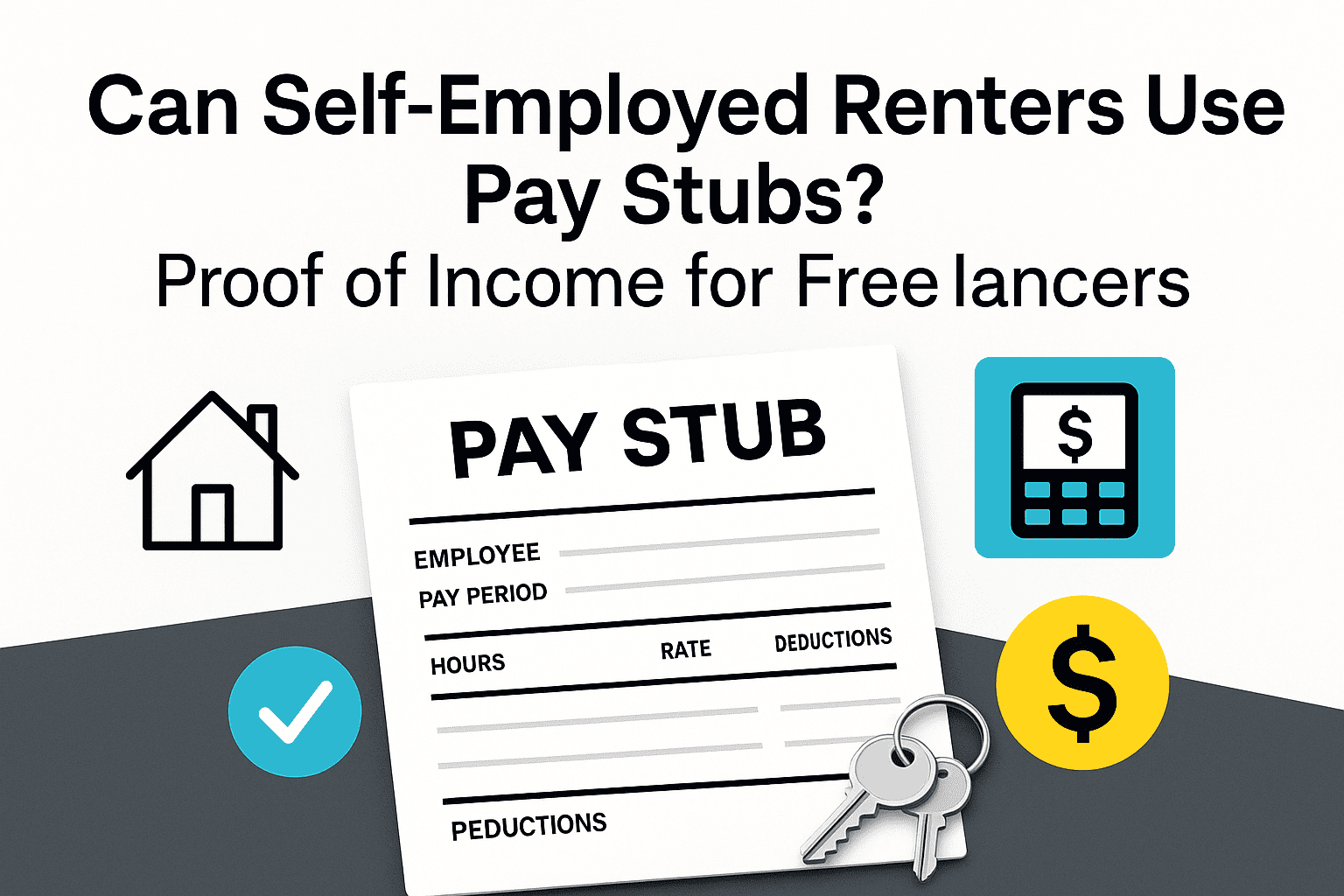
Which edits are allowed when preparing self‑employed pay stubs?
Freelancers must compile their own summaries. You may improve readability, consolidate records and protect sensitive data—so long as you do not change the underlying facts. Below are permissible edits that align with US, UK and Canadian compliance standards.
Organising disparate records
- Invoice compilation: Combine multiple invoices from clients (e.g., from Upwork or direct contracts) into a single statement showing dates, services and amounts. Ensure totals match 1099s and deposits.
- Payment platform exports: Download payout histories from PayPal, Stripe or gig platforms and summarise by month or quarter. Keep transaction IDs and gross amounts before fees.
- Merging with bank statements: Use bank statements to cross‑verify deposits. Merging them into a packet gives reviewers a complete picture of your income stream.
- Reconciliation notes: Add a table that maps each invoice or platform payout to a bank deposit date and amount.
Formatting & readability improvements
- Clean layout: Standardise fonts, align columns and keep currency and decimals consistent.
- OCR & text layer: When scanning, add a searchable text layer so reviewers can copy amounts.
- Cover sheets & annotations: Briefly explain how the summary was compiled (e.g., “Totals reflect Jan–Jun 2025 invoices; see bank statements for matching deposits”).
- File hygiene: Use PDF/A where possible, add bookmarks for navigation, and label files clearly (e.g., “2025‑Q1_Income‑Summary.pdf”).
- Date conventions: Use one date format throughout (e.g., YYYY‑MM‑DD) to avoid ambiguity.
Redaction & privacy
- Mask sensitive identifiers: Show only the last four digits of SSN/SIN/UTR to reduce risk of identity theft.
- Hide personal addresses: You may remove home addresses, keeping company names and invoice numbers intact.
- Exclude non‑relevant expenses: Omit expenses that don’t factor into income. Your goal is to summarise earnings, not spending.
- Client privacy: If confidentiality clauses apply, use partial names while keeping invoice IDs and amounts unchanged.
Compliance Snapshot
Allowed edits: Summarising invoices and payouts; combining records; improving readability; redacting sensitive identifiers; adding explanatory notes and cover sheets; and converting files into a uniform format like PDF/A.
Illegal alterations: Changing invoice amounts, dates or client names; inventing work; adjusting 1099 totals; splitting deposits to inflate client counts; or editing bank statements to show higher income. Altering facts is never permitted.
Example: You exported six months of Stripe payouts, added a table that links each payout to a bank deposit and attached your 1099‑K. You masked your EIN, kept all amounts intact and added a cover note. That is a compliant self‑employed summary.
If you’re unsure whether an edit is permissible, consult our proof of income editing team. We specialise in formatting and organising records while keeping your data intact. Our work helps your documents speak clearly—without inventing earnings.
What edits are illegal when compiling self‑employed pay stubs?
It can be tempting to “smooth out” income by filling gaps or inflating amounts. Don’t. Altering the truth is illegal and can derail housing or credit applications. Below are edits you must avoid and why the risks aren’t worth it.
Examples of prohibited alterations
- Inflating income: Increasing invoice totals or adding phantom invoices to meet thresholds.
- Changing dates: Backdating invoices to show a longer history or adjusting payment dates to appear recent.
- Forging clients: Using names or logos of well‑known companies to imply work you never performed.
- Altering tax forms: Editing 1099s, T4As or SA302s to show higher earnings or lower taxes.
- Manipulating bank statements: Splitting one deposit into multiple lines or changing descriptions to obscure the source.
- Metadata tampering: Stripping or rewriting PDF metadata to hide edit trails or fabrication.
- Fake verification: Listing phone numbers or emails that route to friends or burner lines posing as “HR.”
Consequences of falsification
- Immediate rejection: Many landlords and lenders use automated verification. Discrepancies trigger denials.
- Legal penalties: Fraud violates consumer protection and criminal statutes. In the US, the CFPB and FTC pursue deceptive practices; in the UK, the FCA enforces similar rules; in Canada, the FCAC and CRA investigate misrepresentation.
- Loss of trust: Fraud flags can follow you across screening databases, harming future applications.
- Criminal exposure: Forged tax documents and wire fraud may result in prosecution, fines or imprisonment.
Bottom line: do not change the facts. Our article on the risks of using fake pay stubs outlines the fallout and presents lawful alternatives.
When do self‑employed renters need professional document formatting?
Not every freelancer needs a formal stub, but presentation matters in certain reviews. A well‑structured income packet can mean the difference between approval and delay. Below are common scenarios and what to prepare.
Rental applications
Many landlords request two or three recent pay stubs. If you don’t have them, provide a clear income packet instead. Include a self‑employed summary, three to six months of bank statements showing deposits and your latest tax return or NOA/SA302. Our post on what landlords want to see explains how to package effectively.
- What to add: A one‑page cover note describing your business, clients and seasonality.
- What to avoid: Rounded numbers, vague client labels and missing dates.
- Helpful extra: A landlord reference or proof of on‑time rent from prior leases.
Auto loans & consumer credit
Lenders assess debt‑to‑income ratios and income stability. A self‑employed pay stub summarises earnings patterns and supports affordability decisions. See our auto finance guide for common documentation horizons and why bank statements matter.
- Suggested packet: Self‑employed stub with month‑by‑month totals, three months of deposits and most recent tax filing pages.
- Context: A brief explanation of seasonality or contract cycles can prevent misinterpretation.
SBA & small‑business loans
Small‑business funding usually requires detailed income documentation. Your stub summarises near‑term revenue, while tax forms and P&L statements provide the bigger picture. For guidance, review our legal self‑employed pay stubs article and bank statement formatting services.
- Include: Year‑to‑date totals, top clients by revenue and notes on contract length.
- Also helpful: An accountant letter confirming your summary tallies with tax records.
Cross‑border & remote work situations
If you earn in one country and live in another, present currency conversions, tax differences and documentation from each side. For example, a Canadian freelancer renting in Chicago should convert CAD to USD and include T4A and NOA documents. Professional formatting keeps the file readable and compliant in the target country.
- Tip: State the conversion rate used and the source date for that rate.
- Clarity: Label which documents are “origin country” vs “destination country.”
Mixed income & side hustles
If you combine W‑2 income with freelance work, include traditional pay stubs alongside your self‑employed summary. Our Pay Stub vs W‑2 comparison explains when you should provide both.
- Presentation: Keep separate sections for employment wages and self‑employment revenue.
- Reconciliation: Ensure totals across documents match your tax filings.
Whatever the scenario, the goal is clarity and truthfulness. If you’re unsure how to present your income, our document services team can help build a reviewer‑friendly packet without changing any numbers.
How does FinancialDocsProvider.com help self‑employed renters?
We turn existing records into coherent, compliant proof‑of‑income packets. We are not a payroll provider and never create earnings that don’t exist. Our focus is organisation, legibility and completeness—so your reviewers get exactly what they need.
- Consultation & scope: Tell us where you’re applying, which documents you have and any gaps. We confirm whether you need invoice summaries, bank statement formatting, tax transcripts—or all three.
- Secure document upload: Share invoices, payout statements, bank statements, 1099s/T4As/SA302s and other relevant files through our secure portal. Your data stays with our team.
- Reconciliation: We cross‑check numbers across documents. If something doesn’t tie out, we alert you; we do not “fix” figures.
- Formatting & annotation: We compile your summary, standardise fonts and columns, mask sensitive data and add clear notes and bookmarks. Our bank statement formatting and proof of income editing services focus on clarity.
- Quality review & delivery: We run a final consistency check and deliver a secure PDF ready for submission, with a table of contents and cover sheet when helpful.
Turnaround depends on complexity, and pricing is transparent—see our pricing page. Have questions? Contact our team or learn more about our process.
What should be in a self‑employed pay stub? Compliance checklist
A compliant self‑employed pay stub is more than a one‑page summary. It’s a packet that ties earnings to deposits and tax forms. Use the lists below to assemble what reviewers expect in each jurisdiction.
United States
- Freelance earnings summary: List each invoice with client name, service description, issue date and amount. Totals should match your 1099s.
- 1099 forms: Attach recent 1099‑NEC/K forms for each client. Mask taxpayer IDs if desired.
- Schedule C or 1040 line items: Provide relevant pages showing gross receipts, expenses and net profit.
- Bank statements: Include three to six months showing deposits that correspond to invoices.
- Letter of explanation: Briefly describe your work and clarify any seasonal fluctuations.
United Kingdom
- Invoice log: List each invoice with dates, services and amounts. Note exchange rates if billing in a foreign currency.
- SA302 & Tax Year Overview: Attach your most recent HMRC documents showing total income and tax paid.
- P60/P45 (if applicable): Include employment income documents if you also have wages.
- Bank statements: Provide three to six months showing invoice payments clearing into your account.
- Accountant letter (optional): Useful for complex or rapidly growing businesses.
Canada
- Invoice summary: List invoices with dates, clients and amounts. Use CAD unless your client pays in another currency and disclose the rate used.
- T4A and T2125: Attach T4As issued by clients and a copy of your T2125 showing self‑employment income.
- Notice of Assessment (NOA): Include your most recent NOA to verify totals and taxes.
- Bank statements: Provide several months showing deposits from clients.
- Business licence or GST/HST registration (optional): Include if incorporated or registered for tax.
- Formatting essentials (all regions): State the period covered; show YTD totals; identify currency; keep page numbers; add bookmarks; include a contact email for follow‑up questions.
In every region, your summary should clearly state the period covered (e.g., “Income summary: February–July 2025”), list the currency and reconcile to the supporting documents. Packaging these elements neatly speeds reviews. For more, see tenant approval documents.
What red flags make self‑employed pay stubs look fake?
Self‑employed stubs receive extra scrutiny because there’s no employer verifying them. Avoid the pitfalls below; each can prompt a rejection or a request for additional documentation.
- Inconsistent or missing documentation: Summaries without invoices, tax forms or bank statements look suspicious.
- Mismatched totals: If your summary doesn’t match 1099/SA302/T4A amounts or deposits, underwriters will notice.
- Unrealistic spikes: Sudden jumps in income without explanation invite questions. Use a short note to explain seasonality or one‑off projects.
- Vague client descriptions: “Client A” without an invoice number or contract reference weakens credibility.
- Sloppy formatting: Typos, misaligned columns, inconsistent currency symbols or illegible scans signal carelessness.
- Lack of YTD context: Always include a clear period and YTD totals where relevant.
- Metadata anomalies: Copied logos, overwritten metadata or odd font substitutions can trigger digital checks.
- Rounded or duplicated numbers: Repeated figures ending in “.00” or repeated invoice IDs raise flags.
- Contradictions across documents: If Schedule C reports less income than your summary, reviewers will assume inflation.
To see how reviewers detect issues, read our post on how landlords and lenders detect fake pay stubs. Our team focuses on consistency and readability so your documents withstand scrutiny.
Where can you find official resources & further reading?
Self‑employed renters should lean on primary sources to understand their obligations. Start with the government links below, then explore our detailed guides for packaging your records.
- IRS Form 1099‑NEC guidance – explains reporting requirements for US freelancers.
- GOV.UK: SA302 tax calculation – shows how self‑employment income is calculated in the UK.
- CRA: T4 & payroll deductions – provides official Canadian guidance on income reporting.
- CFPB – consumer guidance on fair screening and income verification.
- FCA – UK regulator on financial conduct and anti‑fraud rules.
- FCAC – Canadian consumer agency covering financial rights and obligations.
Our articles delve deeper into practice:
- How to Create Legal Pay Stubs When You’re Self‑Employed
- Proof of Income for Renting: What Landlords Want
- 5 Documents Landlords Use to Speed Up Tenant Approval
- Renting With No Income But Lots of Savings
- Pay Stub vs Bank Statement: Which Is Better for Proof of Income?
- Pay Stub vs W‑2: Which Proof of Income Should You Provide?
Still have questions or need personalised assistance? Contact our team. We’re here to help you present income clearly and compliantly.
Frequently Asked Questions
Below are common questions about self‑employed pay stubs. If you have more, get in touch with our experts.
Can self‑employed renters use pay stubs to qualify for an apartment?
Yes. Self‑employed renters can create a pay stub by summarising invoices, payments and bank deposits. This stub must be supported by official documents (1099s, SA302, T4A, etc.) and recent bank statements. Landlords often accept these packets when the totals are consistent and match tax records.
What documentation do freelancers need for rental applications?
Provide a self‑employed pay stub or income summary, recent bank statements (three to six months), your latest tax return or Notice of Assessment and any 1099/SA302/T4A forms. A short letter of explanation and, if available, an accountant’s letter can strengthen the application.
Is a self‑employed pay stub a legal document?
It is not an official government form, but it becomes a legal document when used for applications. It must faithfully represent your actual earnings. Fabricating information or altering amounts is illegal and may constitute fraud.
How do I create a self‑employed pay stub for a rent application?
List invoices and payments for the relevant period, then summarise totals by client and month. Attach supporting 1099/SA302/T4A forms, bank statements showing deposits and your latest tax return. Use clear headings and include a brief note about your line of work. For step‑by‑step guidance, see our self‑employed pay stub tutorial.
How many months of records do landlords typically require?
Landlords often ask for two to three months of recent income for employees and three to six months for self‑employed applicants. Requirements vary, so include a year‑to‑date summary—such as an SA302 or NOA—when possible to provide extra assurance.
Need accurate, reliable financial documents fast? Contact FinancialDocsProvider.com now.

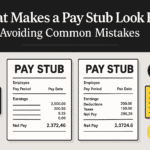
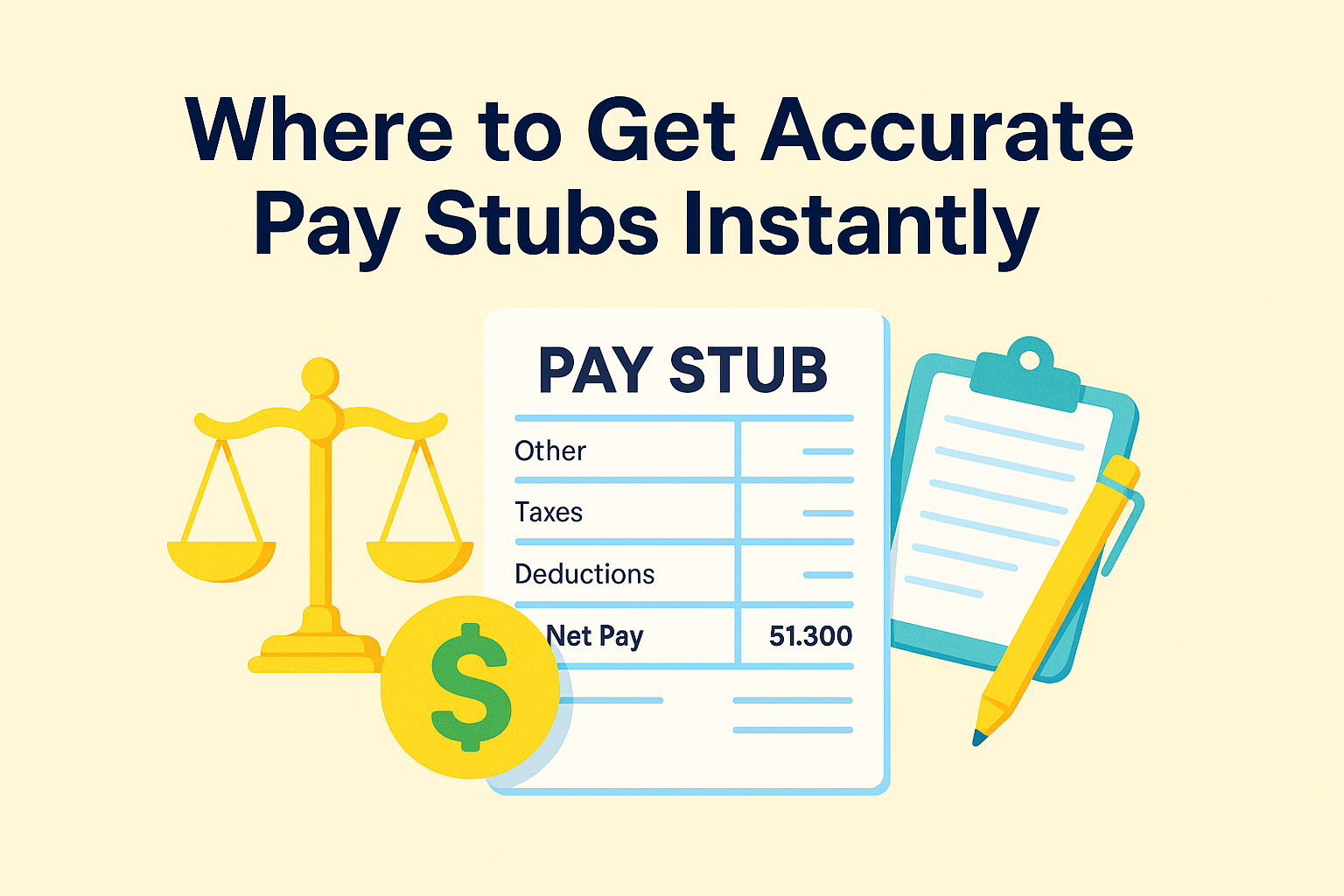

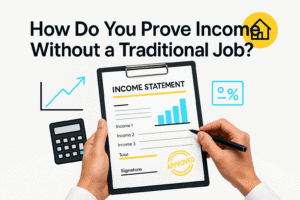

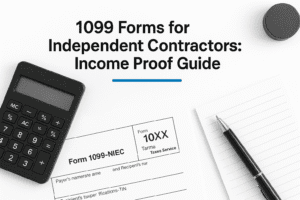
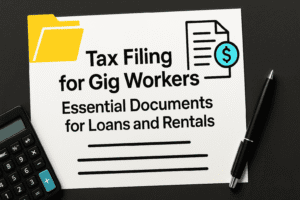
Add comment